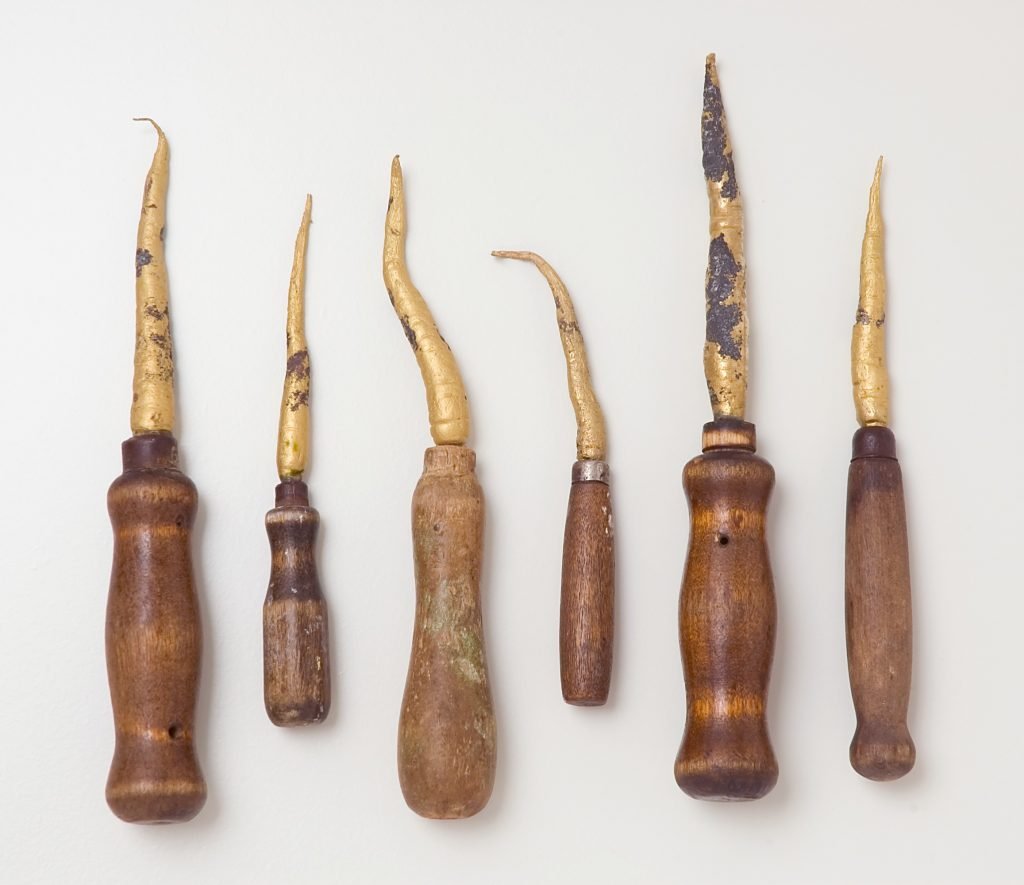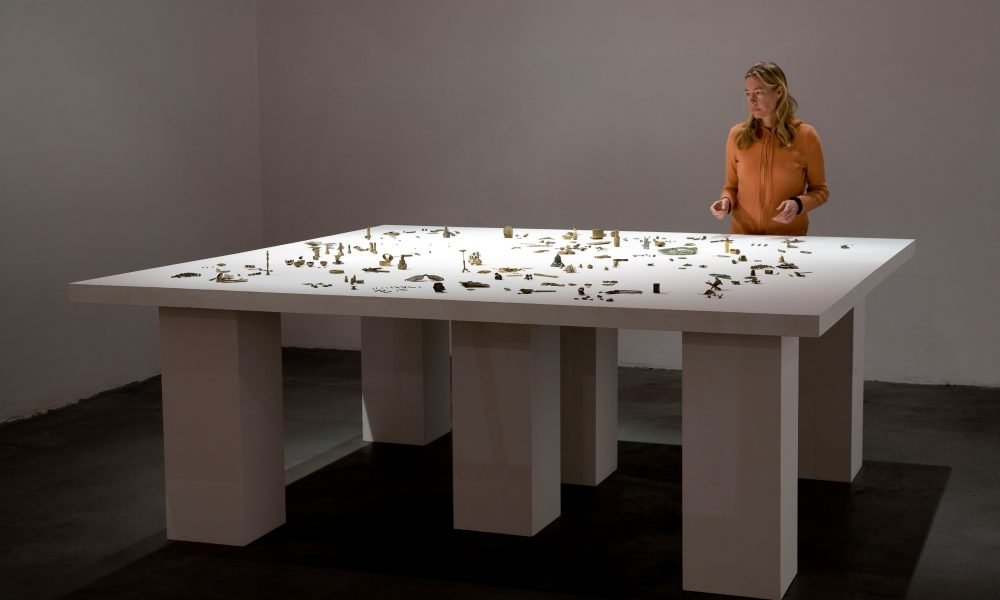Meet Jane Brucker
VoyageLA
May 10, 2021
Jane Brucker, Carrot Sticks. Photo by Brian Forrest.
Jane Brucker, Skin and Hair. Photo by Brian Forrest.
Jane Brucker, NOTIONS (detail). Photo by Brian Forrest.
Jane Brucker, Medicine Tree (detail). Photo by Brian Forrest.
Jane Brucker, Unravel Box - Medium. Photo by Lorenzo Sisti.
Jane Brucker, Fragile Thoughts (detail). Photo by Kyle J. Mickelson.
Jane Brucker, Memorial and Torch. Photo by Brian Forrest.
Jane Brucker, Memorial. Photo by Brian Forrest.
Jane Brucker with her LOST installation at LAContemporary. Photo by Brian Forrest.
Today we’d like to introduce you to Jane Brucker.
Hi Jane, thanks for sharing your story with us. To start, maybe you can tell our readers some of your backstory.
I grew up in southern California in the 1960’s and 1970’s, but my San Diego family history goes back to before the 20th century. My family was very supportive of my creativity, but my parents were more musical than visual, so I was left on my own to explore things like pottery, drawing, costuming and murals. I also made art with my friends. After graduating from SDSU, I came to LA and to Claremont Graduate University for my MFA in painting and performance art. I also wrote poetry and created installation works at that time. My peers and professors with whom I worked closely such as Connie Zehr, Cynda Valle, Denzil Hurley and Leo Robinson, were influential.
I started my teaching career in the mid-1980’s at the Claremont Colleges, but I also worked with senior citizens, with adults with developmental disabilities and for the Arts In Corrections (AIC) program. Teaching so many different people to draw really helped me develop a meditative and philosophical approach to teaching and artmaking. This approach centers on drawing as a fundamentally intuitive and contemplative human activity. The correlation between my teaching and artmaking is accentuated by helping others to patiently observe visual phenomena as a way of understanding the world. This quietude includes problem-solving and playing with relationships and conceptual ideas.
My philosophical approach was further developed when I attended Skowhegan School of Sculpture and Painting in Maine in 1987. There, I met minimalist artist Agnes Martin, who prompted me to look deeply into the relationship between the spiritual and the physical. After returning from Maine that year, my interest led me to the Claremont School of Theology where I completed an MA in Religion and the Arts, focusing on the complicated nature of women in religion and feminist traditions.
Throughout my career, exploring women’s history—including my own family history—and spirituality has allowed me to create installations and performances that engage the viewer through contemplation, movement and ritual activity. In large installations and intimate small-scale sculpture, I want to simultaneously touch on the poetry of existence by examining mortality, legacy and death. Sometimes the objects and materials I use in my work contribute to the storytelling. To do this, I combine found objects and heirlooms that have personal meaning with other materials often associated with craft or feminine work–textiles, wood, glass, and precious cast metals.
In 2010, I became a certified teacher of the Alexander Technique (AT). Like drawing, it also encourages awareness and a meditative state. I now use AT to help others feel more free in their movements and to become more connected to their bodies when drawing or engaged in other forms of art making. I also use it myself and introduce it to participants in my solo or collaborative public performances.
Growing up in California during the 60’s and 70’s was fun but a bit insular (I spent more time on the beach or up at my brother’s organic farm in Northern California than in museums). After college I was busy trying to earn money, so travel outside of California came much later for me. In the mid-1990’s, a friend invited me to his home country of Nepal to complete an installation there (some say it was the first installation art project in Kathmandu!). I discovered that I enjoy meeting artists and making connections in new places as well as understanding a place through its historical tradition. Since then, I have spent time looking, learning, teaching, and exhibiting my work internationally in Germany, Scotland, France, Japan and the Czech Republic. I also continue to show nationally and in Los Angeles, most recently at Baik Art. Time spent alone as an artist-in-residence contributed to my interest in contemplation, including residencies at the Scottish Sculpture Workshop Winter Residency in Darkness and Isolation; DRAWinternational in Caylus, France; and Künstlerhaus Schloss Plüschow, Germany. My husband is a biomedical scientist and a historian of medicine who leads study abroad programs in Germany, so a couple of years ago we started galerie PLUTO in Bonn/Cologne, Germany where we encourage dialogue amongst artists and scientists from here and abroad.
Alright, so let’s dig a little deeper into the story – has it been an easy path overall and if not, what were the challenges you’ve had to overcome?
I like to think of life’s struggles as either challenges or obstacles. There have been plenty of both. The challenges require problem solving and the obstacles require avoidance and/or actively finding ways of moving around them. My best advice is that encountering obstacles and challenges are part of the creative process. Looking at them as part of a bigger process means less time wasted on the “why” and more focus on the “how.” That is not to say that the “why” is not important. It is, but that analysis comes later after you meet the challenge or get past the obstacle. The most important piece of advice I could give is just to keep working (whatever your “work” is) and to not define one’s creative work too narrowly.
What’s next?
galerie PLUTO is probably the biggest surprise and not something I had planned as a future project. As the climate crisis, the COVID pandemic and other aspects of science and health challenge our individual and collective worldviews, galerie PLUTO seems more timely than ever. I feel that the project is something that my husband, Jeremy, and I feel we can give to people beyond our teaching. Creating global dialogue on issues that relate to art and science and helping artists and scientists relate to each other has been very rewarding.
I think my public projects, my teaching and my efforts on behalf of galerie PLUTO are becoming more broad-reaching and global. Conversely, I see my own artwork becoming even more intimate and reflective. I look forward to spending more time quietly in my studio.
BTW-Two of my large scale works are on view this summer. My large-scale historical work, “Fragile Thoughts”—a tribute to Elizabeth Milbank Anderson—(now until September 12) at the Forest Lawn Museum in Glendale. My installation, “LOST,” will be on view (June 2021- May 2022) as part of “Make Yourself at Home” at the San Diego International Airport.








